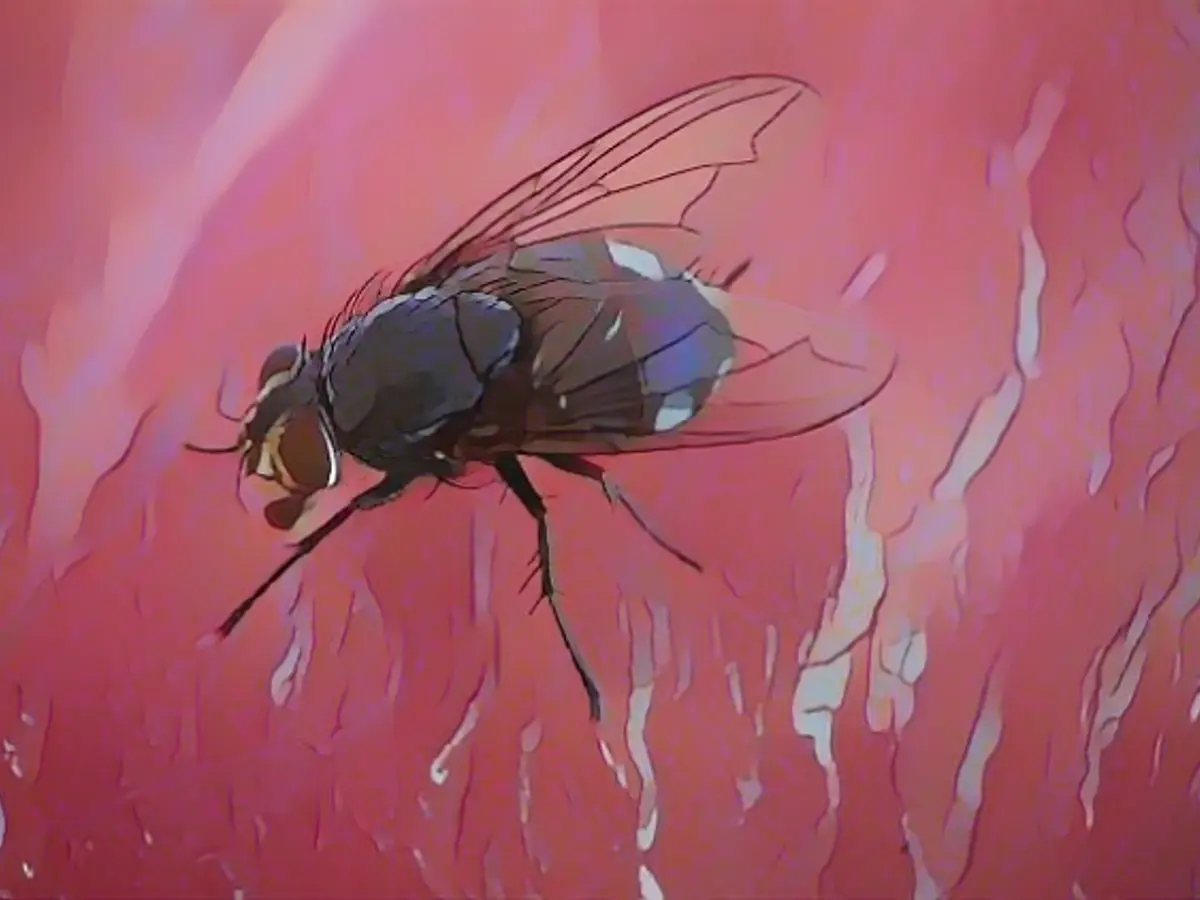Insects that doctors find in people's intestines
Doctors discover an intact fly body in a man's intestine during an examination. They make their rare find public and find no explanation as to how the animal could have gotten there. But colleagues have also made such discoveries.
Doctors in Missouri, USA, have reported on a rare chance discovery they made during a colonoscopy in the American Journal of Gastroenterology. The image published there shows the intact body of a housefly. It is not yet clear how the adult animal was able to get there so unharmed. Although the discovery is very rare, it is not the only one of its kind. In addition to the body of the housefly, a cockroach, a ladybug, an ant and a moth have also been spotted in the intestines of humans in previous investigations of this kind, writes the British Daily Mail. The special thing about this is that evidence is recorded.
During a colonoscopy, the colon and rectum are examined rectally using a tube-shaped instrument called a colonoscope. This is why colonoscopy is also known as an intestinal colonoscopy. At the end of the instrument are one or more light sources and a tiny, powerful camera. During the examination, the doctor assesses the images, which are simultaneously transmitted to a monitor. These examinations are carried out as a preventive measure, for diagnosis or after a bowel cancer has been diagnosed.
How did the fly get there?
But back to the current case of the intact housefly. After the procedure, the patient was informed of the surprising discovery and questioned. Neither the doctors nor the patient had a plausible explanation as to how the animal could have reached the so-called transverse colon, i.e. the upper part of the man's large intestine, Matthew Bechtold, chief physician of gastroenterology at the University of Missouri, is quoted by the British online newspaper "Indipendent". The 63-year-old patient reported that he had only consumed clear liquids before the procedure and had eaten pizza and salad two days previously. However, he could not remember any flies during the meal.
The doctors consider it unlikely that the fly could have entered the man's large intestine through his mouth. In this case, it would be assumed that the upper digestive enzymes and stomach acid would have decomposed the fly. "However, the fly was intact, which makes this hypothesis unlikely," says Bechthold. The variant that the fly entered the patient's intestine via the rectum also does not seem plausible.
It is more conceivable that there were fly eggs or fly larvae on fruit or vegetables that the man had consumed, which had survived the journey through the stomach acid and entered the intestine. There the fly could then have developed into an adult. Even if this only occurs rarely, such a disease is also referred to as intestinal myiasis in medical terminology.
Animals were apparently swallowed whole
According to the Daily Mail, other doctors have also been surprised by various insects they have seen during colonoscopies. In 2010, for example, a cockroach was discovered in the intestine of a 51-year-old woman. However, when the attending doctors tried to remove the animal, it disintegrated. A ladybug in the intestine of a 59-year-old man from Columbia or an ant that was spotted in a man from Portland also puzzled the doctors treating him.
A discovery in 2013 was apparently similarly surprising: the body of a moth was discovered for the first time in the colon of a 55-year-old man in Tampa, Florida. The animal appeared white on the colonoscopy images. The stomach acid had already drained the color from the wings of the six-millimeter-long animal.
In contrast to the fly in the small intestine of the man in Missouri, the experts assume that all other insects discovered had been accidentally ingested whole with food. "Although such ingestions have few consequences for those affected, they are quite rare and can be frightening for the endoscopist," the doctors are quoted as saying.
In the realm of unusual medical findings, a case of a colorectal cancer patient in the United States had an unexpected guest – an intact housefly. This bizarre incident was documented in the American Journal of Gastroenterology, adding to the growing body of evidence regarding insects found in human intestines. Such discoveries highlight the need for further research into the phenomenon, as other insects like cockroaches, ladybugs, ants, and even a moth, have also been observed in similar circumstances.
Despite the rarity, the potential for harmful consequences remains a concern for medical professionals. For instance, accidental ingestion of insects like the one that occurred during a patient's pizza and salad meal, can lead to intestinal myiasis, a condition common in tropical regions but also sporadically reported in developed nations. The precise reasons behind these occurrences continue to intrigue medical experts, as the means by which these insects manage to survive the harsh conditions of the human digestive system remain largely unresolved.
Source: www.ntv.de







